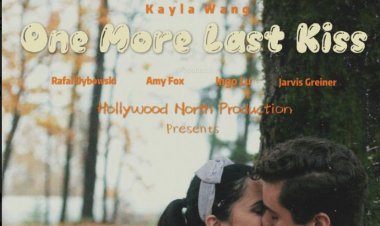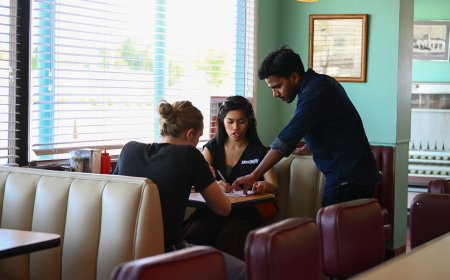Resilience in the Independent Filmmaking Industry: Navigating Challenges and Triumphs
Independent filmmaking is an art form driven by passion, vision, and an unyielding determination to tell stories that matter. Unlike big-budget studio productions, indie filmmakers often face a unique set of challenges that test their resilience at every stage of the process. From funding struggles to distribution roadblocks, resilience is not just a desirable trait but an essential one for success in the independent film industry. The ability to adapt, persist, and innovate in the face of obstacles is what separates successful indie filmmakers from those who abandon their projects prematurely.

Resilience in the Independent Filmmaking Industry:
Navigating Challenges and Triumphs
Independent filmmaking is an art form driven by passion, vision, and an unyielding determination to tell stories that matter. Unlike big-budget studio productions, indie filmmakers often face a unique set of challenges that test their resilience at every stage of the process. From funding struggles to distribution roadblocks, resilience is not just a desirable trait but an essential one for success in the independent film industry. The ability to adapt, persist, and innovate in the face of obstacles is what separates successful indie filmmakers from those who abandon their projects prematurely.
The Financial Struggle: Turning Scarcity into Innovation
One of the most persistent obstacles indie filmmakers encounter is securing funding. Unlike major studios with deep pockets, independent filmmakers often rely on crowdfunding, grants, sponsorships, or personal savings to bring their vision to life. Many turn to platforms like Kickstarter or Indiegogo, where they must craft compelling pitches to persuade potential backers. Others seek out film grants or competitions, which require extensive applications and fierce competition. The ability to stretch a minimal budget while maintaining high production value is a skill that requires both creativity and resilience.
Successful indie filmmakers often find innovative ways to cut costs without sacrificing quality. They repurpose locations, borrow equipment, and call upon a dedicated network of collaborators willing to work for passion rather than profit. Many successful indie films, such as The Blair Witch Project and Paranormal Activity, were made on shoestring budgets yet went on to achieve remarkable success. These filmmakers demonstrated the power of resilience by leveraging resourcefulness and innovative storytelling techniques to overcome financial constraints. The challenge of limited resources forces indie filmmakers to think outside the box, often leading to groundbreaking cinematic approaches that redefine filmmaking itself.
Navigating Production Setbacks
The unpredictability of production is another test of resilience. Weather conditions, equipment malfunctions, scheduling conflicts, and last-minute changes in cast or crew can derail a project in an instant. Unlike large studios that can afford delays, indie filmmakers often have tight schedules and limited resources, making adaptability crucial. Every independent filmmaker faces the moment where they must decide whether to halt production or find creative workarounds to keep their film on track.
Filmmakers who embrace problem-solving and remain flexible often find that their greatest setbacks lead to unexpected breakthroughs. A location falling through might inspire a more compelling alternative setting. Losing an actor might lead to a fresh casting choice that improves the film’s authenticity. Legendary indie directors like Robert Rodriguez (El Mariachi) and Kevin Smith (Clerks) famously overcame production challenges through sheer determination and ingenuity. Their ability to make the best of every situation, no matter how challenging, underscores the importance of resilience in completing a film.
Distribution and Marketing: Breaking Through the Noise
Even after a film is completed, getting it seen is a monumental challenge. The industry is saturated with content, making it difficult for indie films to find distribution and reach audiences. Traditional distribution routes, such as theatrical releases, often favor major studios, leaving indie filmmakers to seek alternative paths. The rise of streaming platforms and digital distribution has offered new opportunities, but it has also increased competition, making visibility a significant hurdle.
Resilient filmmakers must master the art of self-promotion, networking, and strategic marketing to ensure their film reaches its intended audience. Many turn to social media campaigns, engaging with audiences through behind-the-scenes content, trailers, and interactive storytelling. Film festivals remain a crucial gateway for indie filmmakers, but securing a spot in prestigious festivals requires persistence and often multiple submissions. Attending industry events, networking with distributors, and forming strategic partnerships are all part of the journey toward getting a film noticed. In many cases, independent filmmakers also embrace grassroots distribution efforts, organizing local screenings or partnering with niche streaming platforms that cater to their target audience.
Mental and Emotional Resilience
Perhaps the most crucial aspect of resilience in independent filmmaking is mental and emotional fortitude. Rejection is a common experience—film festival rejections, investor refusals, and negative reviews can be disheartening. The sheer workload of an independent filmmaker—who often takes on multiple roles, from writer and director to producer and editor—can be overwhelming. Burnout, self-doubt, and imposter syndrome are constant struggles in the indie filmmaking world.
However, successful indie filmmakers understand that setbacks are part of the journey. Learning from failures, maintaining confidence in their vision, and persevering despite challenges define those who ultimately make an impact in the industry. Many celebrated filmmakers, including Quentin Tarantino and Ava DuVernay, started with small, self-funded projects that faced countless hurdles. Their ability to push forward, learn from mistakes, and refine their craft is what ultimately led to their success. Seeking support from fellow filmmakers, finding a mentor, and celebrating small victories along the way can help sustain motivation and build a lasting career in film.
Conclusion
Resilience in independent filmmaking is about more than just enduring hardships—it’s about transforming obstacles into opportunities. Whether it’s financial constraints, production setbacks, or distribution challenges, independent filmmakers who remain adaptable, resourceful, and determined can carve their path to success. In an industry that often favors the well-funded, it is resilience that allows indie filmmakers to defy the odds and bring their stories to life. For those who persist despite the odds, the reward is not just in completing a film but in leaving a lasting mark on audiences and the industry itself.
What's Your Reaction?
 Like
0
Like
0
 Dislike
0
Dislike
0
 Love
0
Love
0
 Funny
0
Funny
0
 Angry
0
Angry
0
 Sad
0
Sad
0
 Wow
0
Wow
0


































































